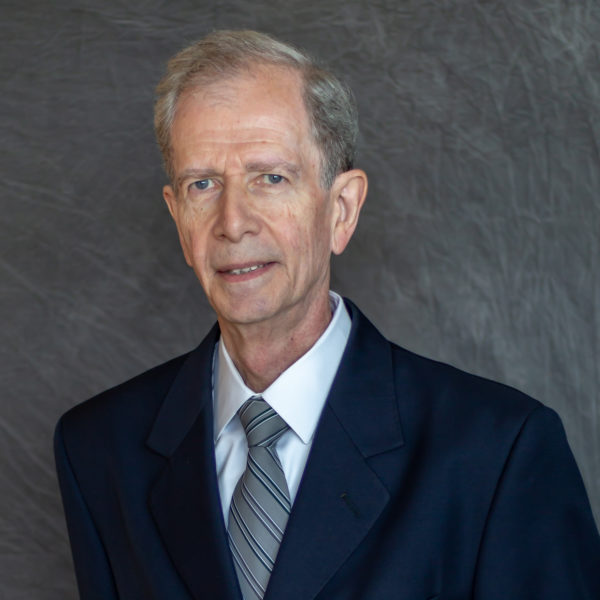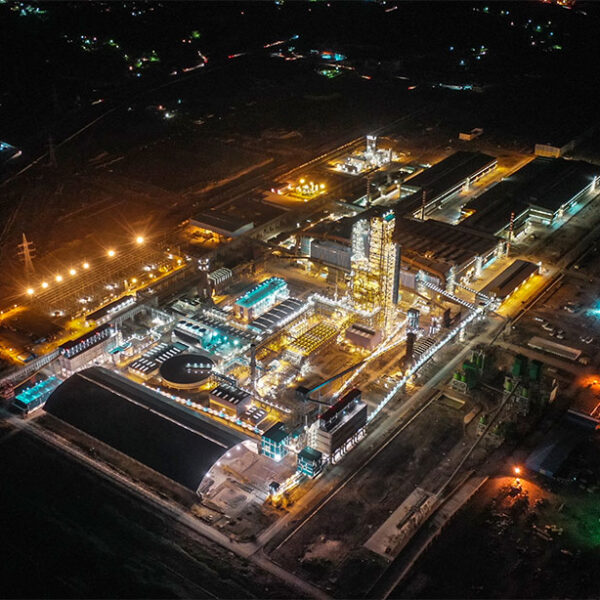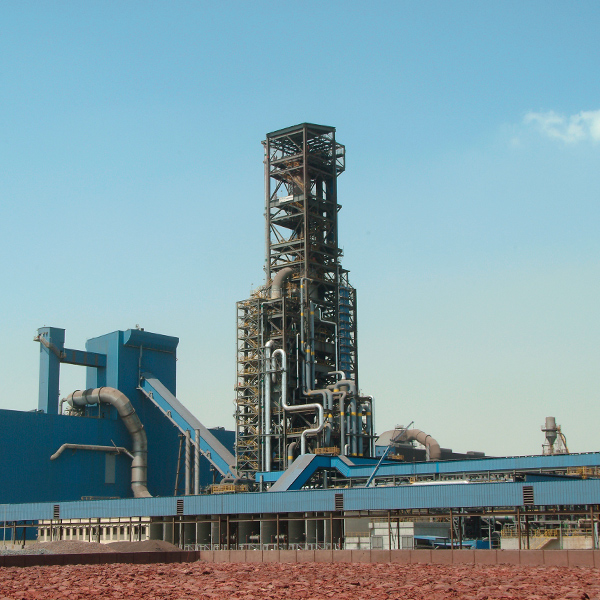MIDREX® Direct Reduction Plants – 2017 Operations Summary
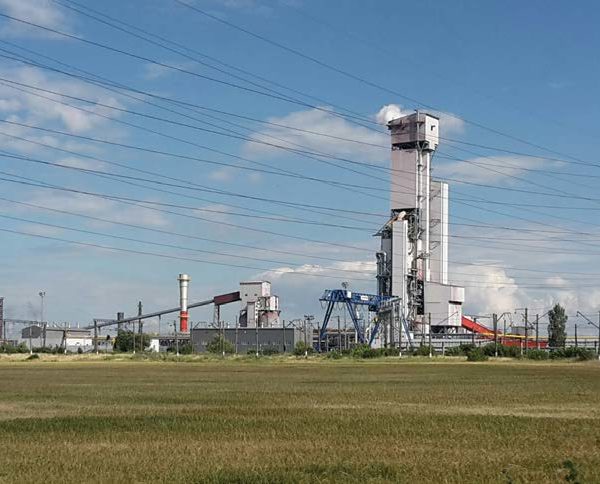
MIDREX® Plants produced 56.5 million tons in 2017, almost 19% more than the updated total of 47.6 million tons produced in 2016.
The production for 2017 includes both the tonnage confirmed by MIDREX® Plants located outside Iran and those within Iran. Over 5.8 million tons of hot DRI (HDRI) were produced by MIDREX® Plants and consumed in nearby steel shops, assisting these steel shops to reduce their energy consumption per ton produced and increase their productivity.
MIDREX® Plants continued to account for approximately 80% of worldwide production of direct reduced iron (DRI) by shaft furnaces. Sixteen plants established new annual production records and at least 16 plants established new monthly production records. Thirteen additional MIDREX® Modules came within 10% of their record annual production and 20 MIDREX® Modules operated more than 8000 hours.
Production of DRI and hot briquetted iron (HBI) dramatically increased, as world pricing for iron and steel products rose to profitable levels in almost all nations. Total DRI output exceeded 87 million tons. DRI production growth was strongest in Iran and India. In Iran, the commissioning of new plants caused output to be 28% greater than the prior year, according to WSA numbers. Exports of steel from China, though large, were much less than in previous years, and the decline is continuing into 2018, as efforts to control pollution combined with a growing domestic demand for steel are bringing balance to the market.
The price of iron ore remained volatile. The bell-wether price of 62% sinter fines, delivered to Qingdao, China, approximately doubled in 2016, from around $40/t up to nearly $80/t. In 2017, it peaked at $92/t in March and then plummeted to less than $55/t within only three months, then recovered to $74/t by the end of the year.
Since direct reduction plants use very high grades of ore, it is also important to look at the premium charged for “DR Grade,” which rose from $53/t mid-year 2017 to $63 at the beginning of January 2018, where it has remained since. Especially high premiums for high grade ore were possible due to the tightness of supply caused by a combination of demand growth and supply constraint. The Samarco mine, a major portion of the world capacity for high grade pellets, remained closed throughout the year.
The high prices for iron ore were sustainable due to the strong demand for iron metallics. Using the US market as a guide, the price for premium scrap steel and DRI/HBI rose in 2016 from as low as $160/t to over $280/t by the beginning of 2017. In 2017, prices continued to rise, albeit with volatility, so they were at the $370-390/t level by the end of the year and have continued into 2018.
One new MIDREX® Module producing HBI was started up in March 2017: LGOK HBI-3 located in Gubkin, Russia, belonging to the Metalloinvest group. Two additional modules started up recently in Iran: an 800,000 t/y cold DRI (CDRI) MIDREX® Plant belonging to the Sefid-Dasht Steel Complex at Sefiddasht, Chaharmahal-Bakhtiari, in October 2016; and a 1,500,000 t/y HBI MIDREX® Plant belonging to Persian Gulf Saba Steel Co. near Bandar Abbas, in March 2017.
MIDREX® Plants have produced a total of 967 million tons of DRI/HBI through the end of 2017.
2017 PLANT HIGHLIGHTS
ACINDAR
ACINDAR’s MIDREX® Plant operated an increased number of hours in 2017 (30% more than in 2016) despite the typical winter natural gas curtailments in July and August and market constraints. In 39 years of operation to date, ACINDAR’s MIDREX® Plant has produced almost 30 million tons.
ANTARA STEEL MILLS
The first MIDREX® Plant designed to make HBI surpassed the 20 million-ton production milestone in 2017, although the plant aver-aged 87% of annual rated capacity during the year due to market constraints. Total iron in the HBI product was the highest of all MIDREX® plants, averaging 93.67% for the year. All HBI produced was shipped to third parties by water.
ARCELORMITTAL HAMBURG
In its 46th year of existence, AM Hamburg’s MIDREX® Plant, comfortably exceeded annual rated capacity, averaging over 77 t/h, and set a new annual production record of 635,000 tons with a record 8,196 hours of operation in the year. Despite product quality of 94.66% metallization, AM Hamburg’s natural gas consumption was below 2.40 netGcal/t and its electricity energy consumption at 72 kWh/t was the lowest of any MIDREX® Plant.
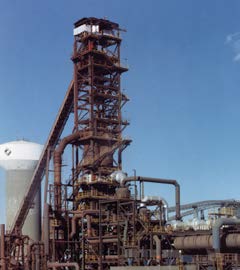
ACINDAR
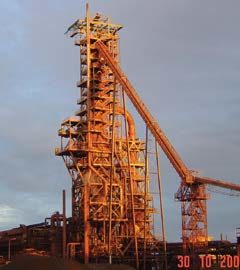
Antara Steel Mills
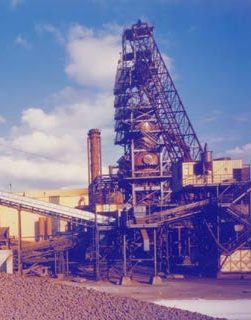
ArcelorMittal Hamburg
ARCELORMITTAL LAZARO CARDENAS
AMLC produced 11% over its rated capacity of 1.2 million tons. In 2017, its 20th year in operation, AMLC surpassed the 30 million-ton production mark despite downturns in 2001-2002 and 2009. Its 30.3 million tons produced is the most by a single MIDREX® Module to date, surpassing the previous record-holder, the smaller ACINDAR module.
ARCELORMITTAL MONTREAL
With 8,107 hours of operation in the year, Module 1 set a new monthly production record in March, as well as a new annual production record, 4.8% higher than the previous record set in 2010, and surpassed the 10 million-ton milestone. In its 40th anniversary year, Module 2 set a new annual production record of 980 thousand tons with 8,097 hours of operation, eclipsing the previous record set in 2014. Production from both modules exceeded 1.6 million tons.
ARCELORMITTAL POINT LISAS
All three MIDREX® Modules in Trinidad and Tobago remained shut down throughout the year.
ARCELORMITTAL SOUTH AFRICA (SALDANHA WORKS)
The COREX® export gas-based MXCOL® Plant operated the whole year but was limited by the availability of gas from the COREX® Plant. The MXCOL® Plant averaged using more than 66% South African lump ore for the year.
COMSIGUA
COMSIGUA operated at reduced capacity for about 1,000 hours over a 3-month period in the year due to the limited supply of locally produced pellets.
DELTA STEEL
The two MIDREX® Modules in Nigeria did not operate in 2017.
DRIC
In their 10th anniversary year, DRIC’s two MIDREX® Modules in Dammam, Saudi Arabia, operated well despite being limited by the demand of the neighboring Al-Tuwairqi steel shops. Module 1 operated a record 8,231 hours in 2017, within 10% of its annual production record; and Module 2 operated a record 8,333 hours, within 4% of its annual production record.
ESISCO
Due to the high price and reduced availability of natural gas in Egypt, as well as the competition of foreign steel products, ESISCO did not operate.
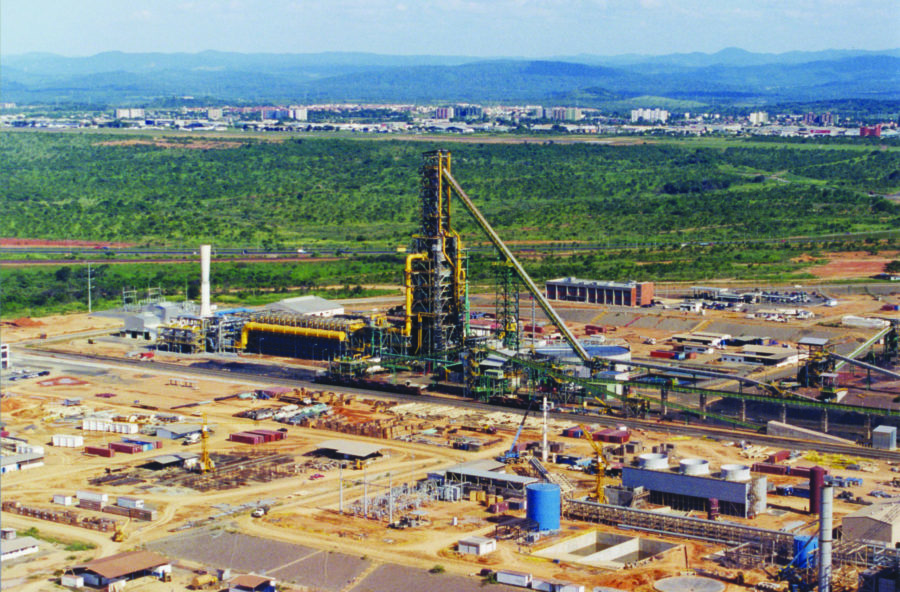
Comsigua

ArcelorMittal Lazaro Cardenas
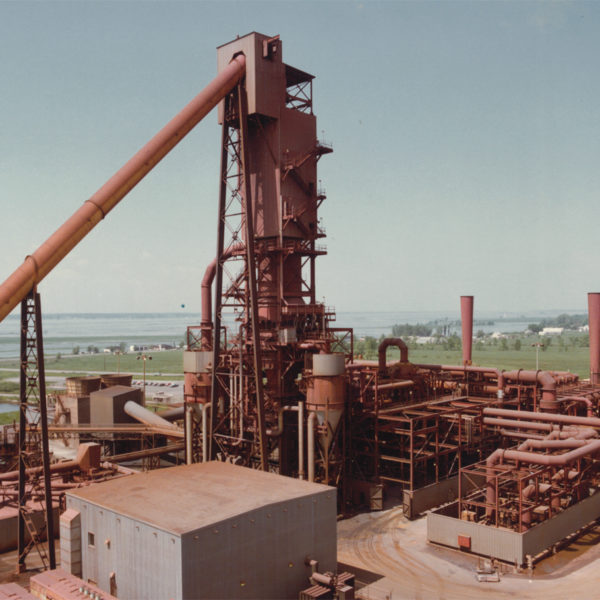
ArcelorMittal Montreal
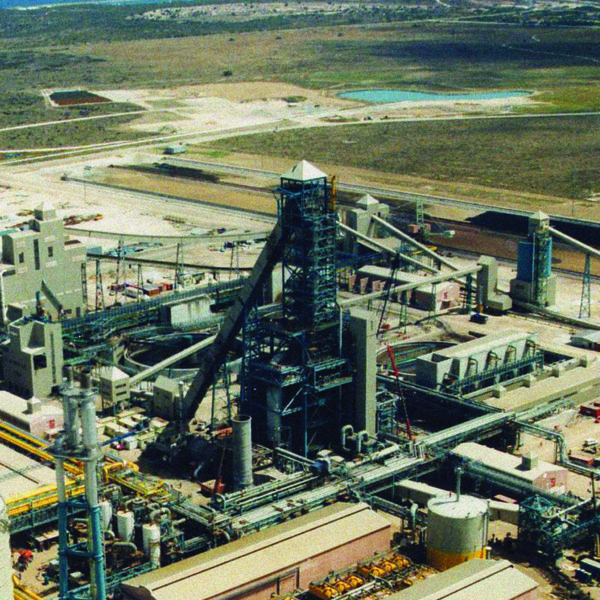
ArcelorMittal South Africa
ESSAR STEEL
Essar’s HDRI/HBI modules (Modules 2 through 5) operated at less than maximum capacity, producing mostly HDRI, whereas Module 6 (producing CDRI) operated at maximum capacity, breaking its previous annual production record set in 2012, as well as its monthly production record in January. Modules 5 and 6 operated using off-gas from Essar’s COREX® Plant as part of their energy input. Module 1 remained shut down the whole year. Total DRI production for the complex was 4.0 million tons in 2017.
EZDK
Less limited by natural gas availability in Egypt than in recent years, production from EZDK’s MIDREX® Modules increased to just under 2.5 million tons, which is about 81% of their maximum capacity. Twenty years since initial startup, EZDK’s Mod 2, rated for 800,000 t/y, has produced 17.8 million tons despite a slowdown the last few years due to the limited availability of natural gas. EZDK again focused on maximizing production of DRI with the natural gas available and on maximizing operating time (8,362 hours in Module 1 and 8,346 hours in Module 2).
FERROMINERA ORINOCO
Ferrominera Orinoco’s MIDREX® HBI Plant in Puerto Ordaz operated at reduced capacity most of the year, producing approximately 25% of its total annual rated capacity due to limited availability of locally produced oxide pellets in Venezuela.
HADEED
Hadeed exceeded rated capacity for the 33rd consecutive year in Modules A and B and for the 25th consecutive year in Module C. In its 10th anniversary year, Module E produced 1.88 million tons, exceeding its rated capacity of 1.76 million tons, and averaging 237 t/h and 7,950 hours of operation in the year. Hadeed’s four MIDREX® Modules have produced 86 million tons of DRI to date.
JINDAL SHADEED
In 2017, Jindal Shadeed established a new annual production record by operating a record-breaking 8,642 hours, despite being limited by the availability of natural gas. This MIDREX® Plant is designed to produce mainly HDRI, with HBI as a secondary product stream. A major portion of its production (88%) was consumed as HDRI by Jindal Shadeed’s own steel shop adjacent to the DR plant.
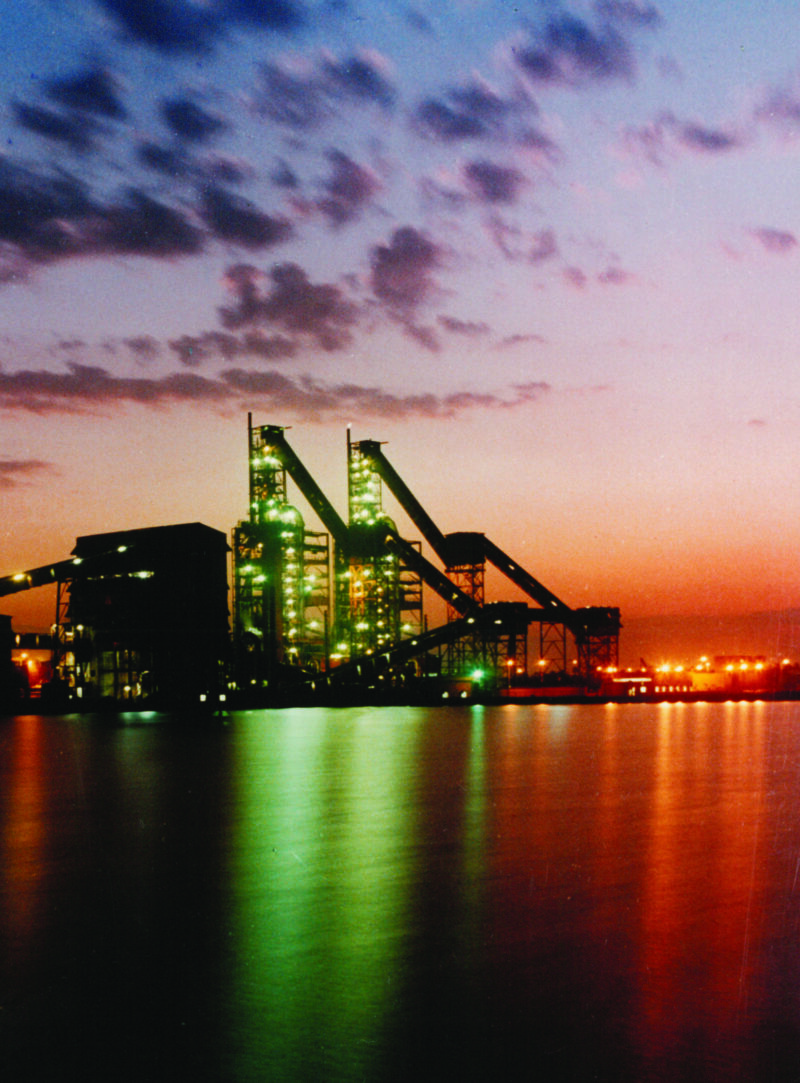
Essar Steel
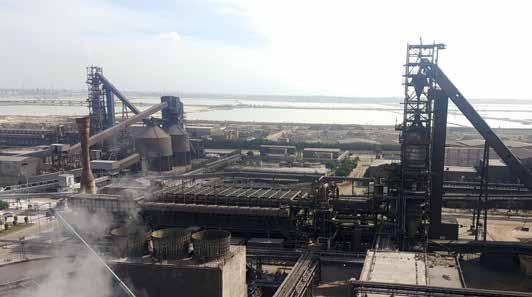
EZDK
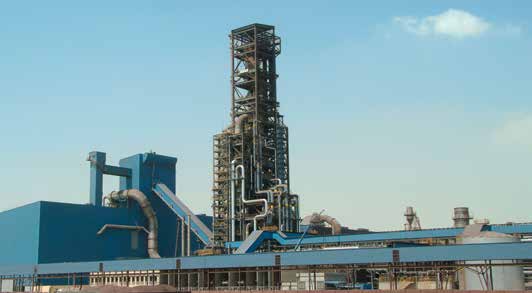
Hadeed Module E
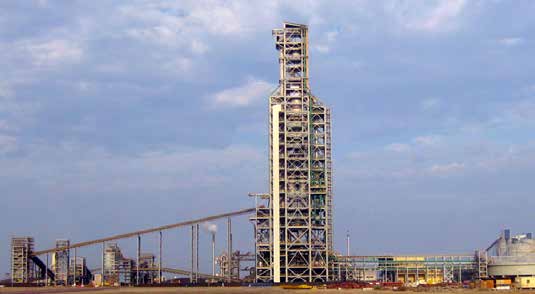
Jindal Shadeed
JSPL (ANGUL)
Jindal Steel and Power Ltd.’s (JSPL) combination HDRI/CDRI plant in Angul, Odisha State, India, operated at reduced capacity during the first half of 2017, with 76% of production being fed hot to their steel shop. The plant remained shut down the second half of the year upon the start-up of JSPL’s new blast furnace, and is expected to restart operations in the second half of 2018. This is the first MXCOL® DRI plant using synthesis gas from coal gasifiers to produce HDRI and CDRI for an adjacent steel shop.
JSW STEEL (DOLVI)
JSW Steel’s MIDREX® Plant, which produces CDRI, set a new annual production record for the second year in a row, operating 8,186 hours in 2017 at increased production rates, exceeding their previous record by 8.6%. Unscheduled shutdown time was limited to only 5.6 hours. The plant also set a new monthly production record in December after breaking the previous monthly record twice earlier in the year. The system installed at the end of 2014 to reduce natural gas consumption by adding coke oven gas (COG) from JSW Steel’s coke oven batteries to the MIDREX® Shaft Furnace operated throughout the year. The plant has operated over 8,000 hours per year on average since its start-up in September 1994.
JSW STEEL (TORANAGALLU)
JSW Steel’s hot/cold DRI plant using COREX® export gas in Toranagallu, Karnataka State, India, set a new annual production record for the third straight year through increased hourly productivity and a record 8,094 hours of operation in 2017. JSW also set a new monthly production record in March 2017. This is the second plant of its kind, the first one being ArcelorMittal’s COREX®/MIDREX® Plant at Saldanha, South Africa.
LEBEDINSKY GOK
A new MIDREX® HBI Module, LGOK HBI-3, located in Gubkin, Russia, and belonging to the Metalloinvest group, was started up in March 2017, and rapidly met expectations. LGOK’s other MIDREX® HBI Module, HBI-2 produced over its rated capacity, operating 8,087 hours and producing only 2.7% less than their production record set in 2015.
LION DRI
The Lion DRI plant located near Kuala Lumpur, Malaysia, continued to be shut down throughout 2017 due to insufficient market demand for locally produced steel products.
LISCO
Twenty years after the startup of Module 3, the production at LISCO’s three MIDREX® Modules in Misurata, Libya, decreased 19% compared to 2016 totals due to restricted natural gas supply and recovery from the civil war.
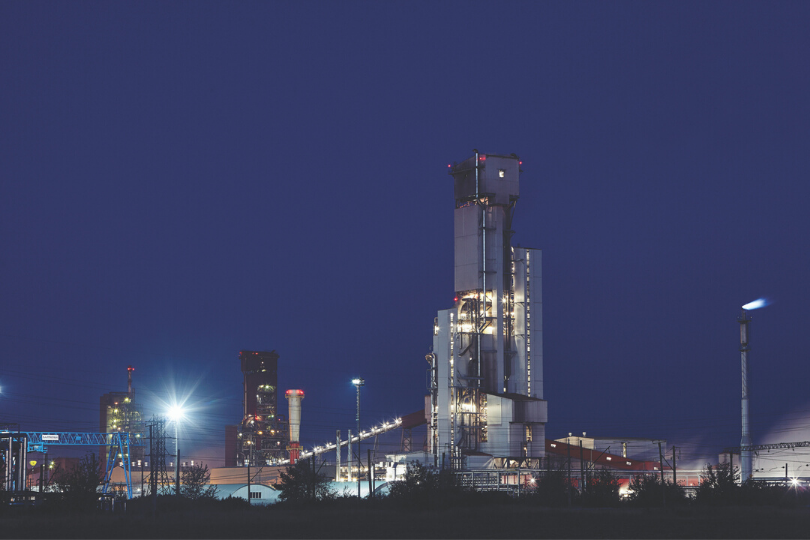
LGOK HBI-2 and HBI-3
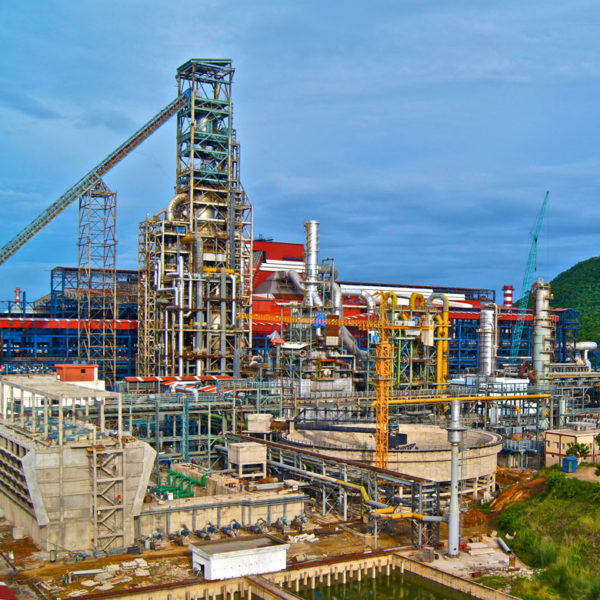
JSPL (Angul)
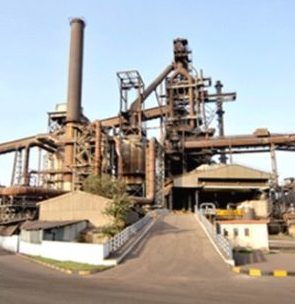
JSW Steel (Dolvi)
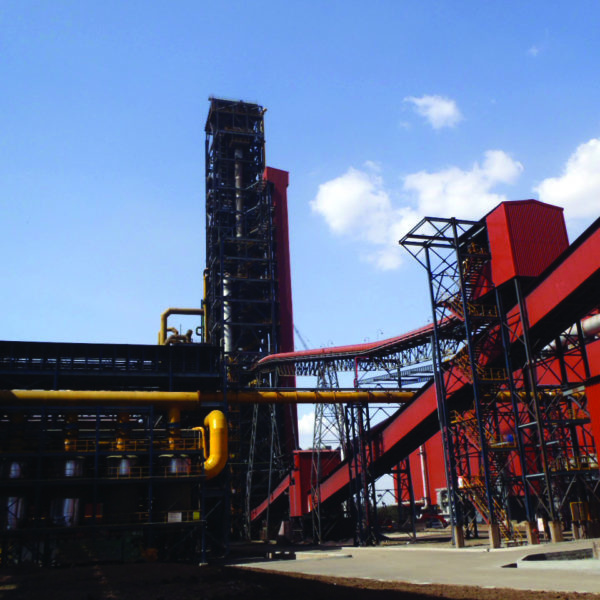
JSW (Toranagallu)
NU-IRON
In its 11th year in operation, Nucor’s MIDREX® Plant in Trinidad and Tobago established a new annual production record and broke its monthly production record twice in 2017. Average DRI metallization for the year was the highest of all MIDREX® Plants at 96.29%, with 2.70% carbon in the DRI.
OEMK
Thirty years after the start-up of Modules 3 and 4, OEMK produced just under 3 million tons in 2017, with Modules 1 and 2 setting new monthly production records in July and December, respectively. Module 2 underwent a revamp in August-September to increase production, whereas Modules 1, 3 and 4 operated 8,254, 8,362 and 8,417 hours, respectively in 2017. Modules 1, 2 and 4 came within 2-3% of their annual production records, whereas Module 3 came within 7.5% of its annual production record. OEMK’s four modules have produced over 66 million tons since start-up of the first module in December 1983.
QATAR STEEL
In its 10th full year of operation, Qatar Steel’s dual product (CDRI and HBI) Module 2 operated 19% over its rated annual capacity of 1.5 million t/y, and came within 5% of its annual production record and within 1% of its monthly production record. The entire production from Module 2 was CDRI, with metallization averaging 94.8% for the year. Operating over 8,100 hours in the year, the production of Module 1 was only 3.4% below its record annual production and within 1% of its monthly production record. With the 25.4 million tons from Module 1 and the 16.1 million tons from Module 2, Qatar Steel has produced more than 41 million tons of DRI to date.
SIDOR
Production from all four of Sidor’s MIDREX® Modules was 620,000 tons in 2017, limited by oxide pellet and natural gas availability. Module 2C continued to be shut down the whole year and Module 2B was shut down in January for the remainder of the year.
SULB
SULB’s 1.5 million tons/year combo (simultaneous CDRI and HDRI production) MIDREX® Plant in Bahrain was limited by market demand in its fourth full year of operation. HDRI sent directly to the steel mill accounted for 76% of DR plant production.
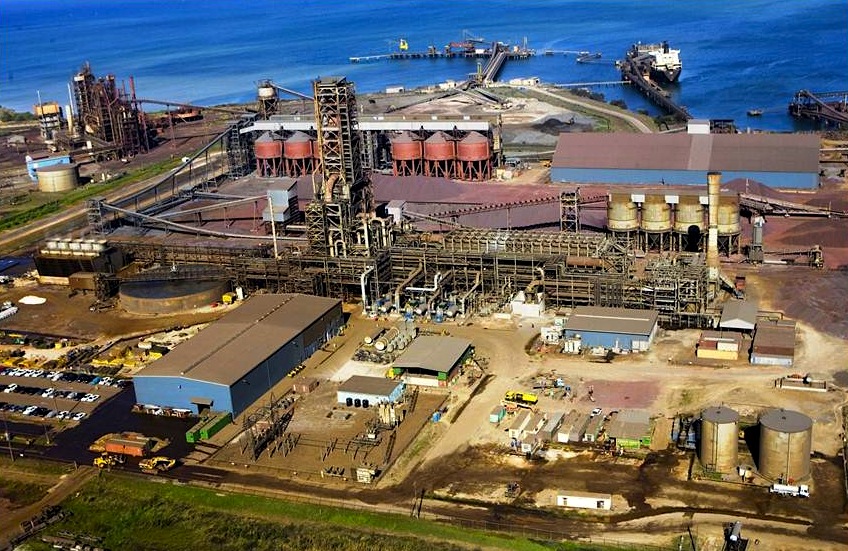
Nu-Iron Trinidad and Tobago
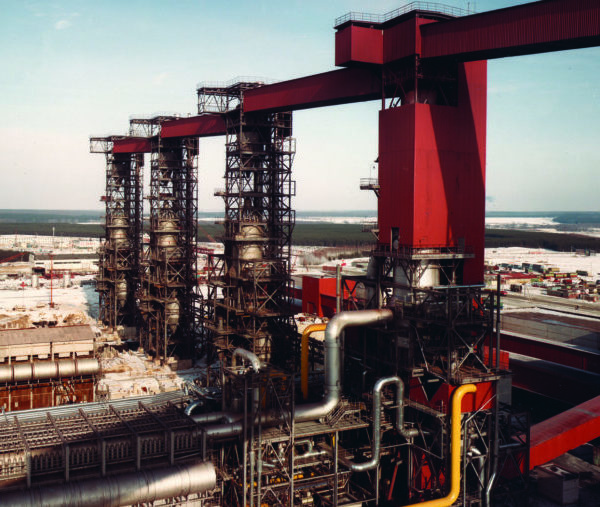
OEMK
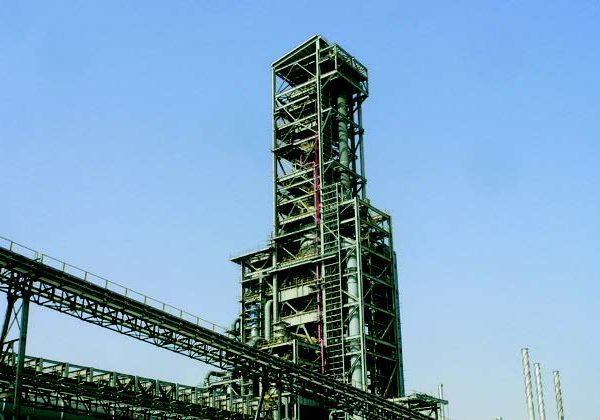
Qatar Steel
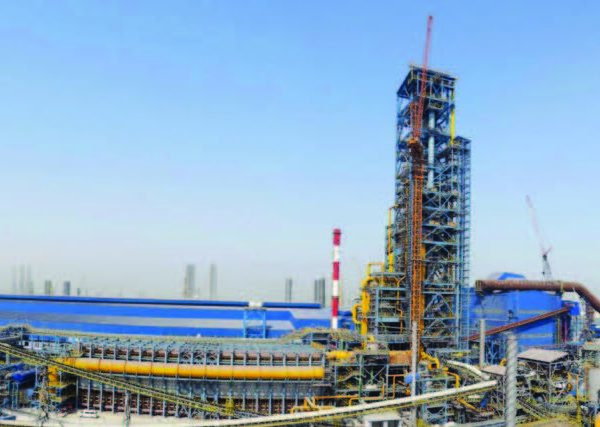
SULB
TENARISSIDERCA
TenarisSiderca operated well below maximum capacity and was down all the month of January and from June through August due to limited DRI demand by the steel shop and natural gas curtailment during the winter months.
TUWAIRQI STEEL MILLS
The Tuwairqi Steel Mills 1.28 million tons/year combo (simultaneous CDRI and HDRI production) MIDREX® Plant, located near Karachi, Pakistan, did not operate in 2017 due to market conditions.
VENPRECAR
VENPRECAR’s HBI production was restricted by the limited availability of iron ore pellets in Venezuela.
voestalpine TEXAS
The 2.0 million tons per year voestalpine Texas MIDREX® HBI Plant, located near Corpus Christi, Texas, USA, ramped up production in 2017, setting a new annual production record and various monthly production records during the year. A majority of the HBI produced was shipped to the steel mills of its parent company, voestalpine AG, in Austria.
EDITOR’S NOTE:
At the time of printing, only limited information had been received from MIDREX® Plants in Iran.
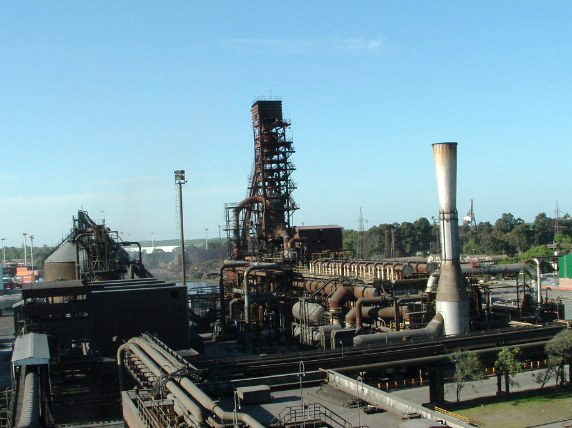
TenarisSiderca
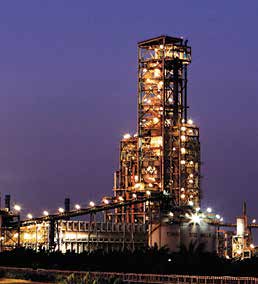
Tuwairqi Steel Mills
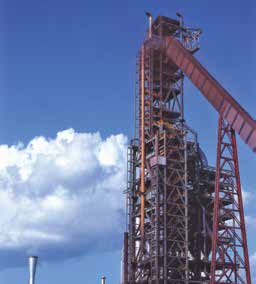
VENPRECAR
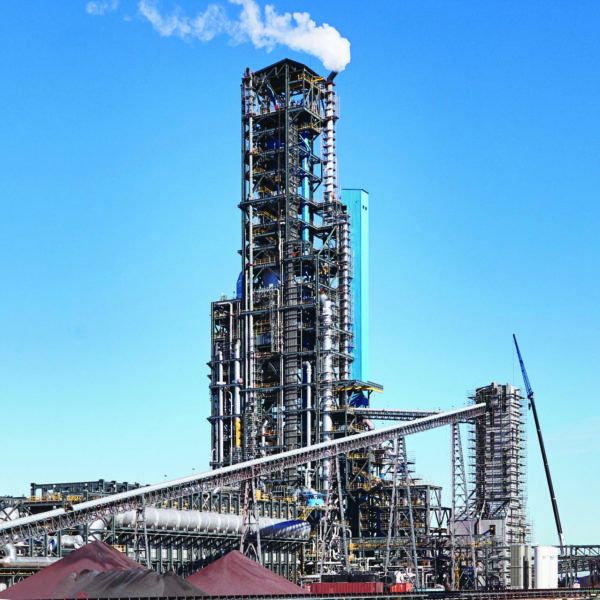
voestalpine Texas
